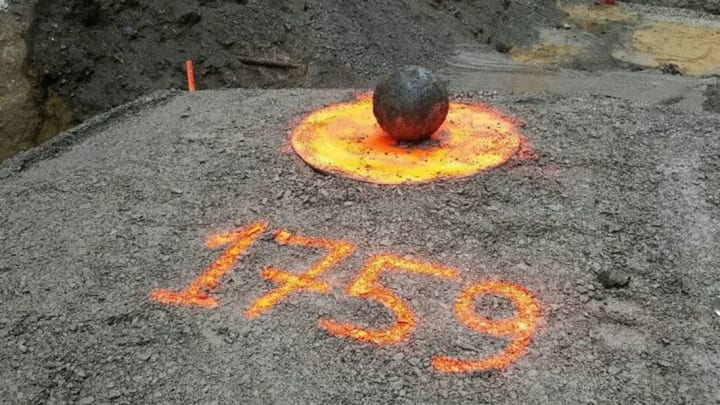Quebec City is famous today for its old-world European charm, but a construction crew recently discovered a living relic of the city’s military past: a potentially explosive cannonball, dating all the way back to the French and Indian War.
As Smithsonian reports, workers conducting a building excavation in Old Quebec—the city’s historic center—last week unearthed the 200-pound metal ball at the corner of Hamel and Couillard streets. They posed for pictures before contacting municipal authorities, and archaeologist Serge Rouleau was sent in to collect the goods.
Initially, nobody—including Rouleau—knew that the rusty military artifact still posed a threat to city residents. But after the archaeologist toted the cannonball home in a trailer, he noticed a rusty hole through the center of the shell. This made him fear that the projectile was still loaded with gunpowder.
Rouleau contacted the Canadian military, which deployed bomb disposal specialists to collect the cannonball. They moved it to a secure location, where it will reportedly be either neutralized or destroyed. If the cannonball itself can be saved as a historic relic, it might be displayed in a museum.
“With time, humidity got into its interior and reduced its potential for exploding, but there’s still a danger,” munitions technician Sylvain Trudel told the CBC. “Old munitions like this are hard to predict … You never know to what point the chemicals inside have degraded.”
Experts believe that the cannonball was fired at Quebec City from Lévis, across the St. Lawrence River, during the Battle of the Plains of Abraham. This battle occurred on September 13, 1759, during the French and Indian War, when invading British troops defeated French forces in a key battle just outside Quebec City. Ultimately, the clash helped lead to Quebec’s surrender.
[h/t Smithsonian]
